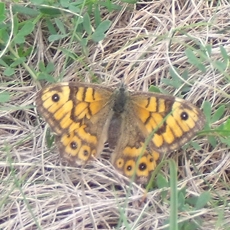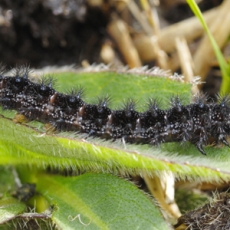Insects and Invertebrates
It’s the diverse habitats of the Solway Coast Area of Outstanding Natural Beauty which make this such a great place to discover insects and invertebrates.
One additional factor that allows so many species to thrive so far north is the influence of the Gulf Stream.
Some of those creatures who like the warmer climes are the purse-web spider which survives at Castle Hill Point at Rockcliffe, and the bog bush-cricket at Wedholme Flow.
The pools on the saltmarsh attract beetles, depending on their levels of salinity, while the higher levels of the marsh, where fresh water dominates, attract invertebrates like flies.
The upper shores are popular with beetles and flies, thanks to their decaying debris and driftwood hideaways, while rocky shores have their own distinctive invertebrates.
Sand dunes provide the best habitat for warmth-loving insects. They like the diverse vegetation structure and areas of bare ground provide basking, hunting and burrowing sites for many different species. The nationally scarce grassbug Trigonotylus psammaecolor has been found on the seaward edge of dunes at Silloth. Butterflies and the large robber fly are typical species found on the Solway.
Another thing which keeps insect and invertebrate populations on the Solway Coast is the plants – particularly those with bright, colourful flowers. They attract the insects which feed off the nectar, then spread the pollen.
There are some plants that the insects won’t like, like the rare sundew, which is a carnivorous variety. Its leaves are covered in red sticky hairs which are used to catch insects as they land – they are then digested and absorbed through the leaves so the sundew gets the nutrients it needs that are not available from the Solway’s waterlogged soils. Look for these around Glasson Moss.
Inland, look out for Britain’s largest dragonfly, the emperor, alongside four-spotted chasers, common hawkers, southern hawkers and darters. You can also see several species of damselflies such as common blue, azure and emerald.
The Bowness on Solway nature reserve is a place to go wildlife spotting – more than 20 species of butterfly and 350 types of moth have been seen there. It’s home to numerous species including ringlet, small copper, large skipper and peacock. Over in Finglandrigg Wood, there are small pearl-bordered fritillary, while purple hairstreak live up in the canopy of oak trees. This is also an important place for the marsh fritillary butterfly once extinct in England it was reintroduced here in 2007. Look for their brown and orange speckled wings from May to the end of June.
It feeds on the devils-bit scabious, a wild flower that grows in damp, marshy grasslands which has largely disappeared from our landscape since the end of the Second World War. We’ve planted thousands of scabious here to help their breeding habitat.








